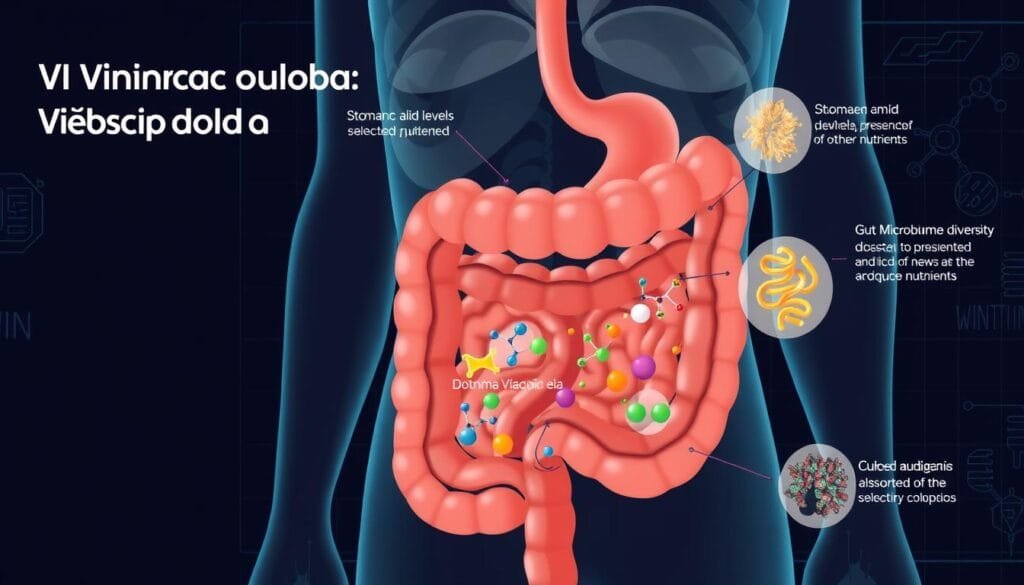Currently Empty: RM0.00
Did you know that up to 90% of this essential nutrient can be absorbed by the body—but only if taken correctly? Many people take dietary supplements without realizing their effectiveness depends on proper intake and form. Understanding how to maximize benefits can make a big difference in overall health.
Research shows that whether synthetic or natural, the body processes this nutrient similarly. However, factors like gut health and diet play a crucial role. Wellness Concept specializes in helping individuals optimize their supplement routines for better results.
For personalized advice, contact Wellness Concept via WhatsApp at +60123822655 during business hours. Small adjustments can lead to noticeable improvements in well-being.
Key Takeaways
- Up to 90% absorption is possible with the right approach.
- Form and diet influence how well the body uses this nutrient.
- Synthetic and natural versions have similar bioavailability.
- Gut health impacts effectiveness.
- Expert guidance can enhance results.
Why Vitamin C Absorption Matters for Your Health
Optimal nutrient intake plays a vital role in overall well-being. This essential compound supports the immune system, aids in collagen synthesis, and enhances iron uptake. Without enough of it, the body struggles to repair tissues and fight infections.
Historically, deficiencies led to scurvy, a condition marked by fatigue and slow wound healing. Today, even mild shortages can weaken immunity and increase oxidative stress. Adequate levels help neutralize free radicals, protecting cells from damage.
Research links higher plasma levels to reduced chronic disease risks. For example, smokers need 35% more daily due to increased oxidative stress. Poor intake often leads to fatigue and slower recovery times.
| Function | Impact of Low Intake | Dietary Sources |
|---|---|---|
| Immune Support | Frequent illnesses | Citrus fruits, bell peppers |
| Collagen Production | Slow wound healing | Broccoli, strawberries |
| Antioxidant Defense | Higher oxidative stress | Kale, kiwi |
Pairing this nutrient with a balanced diet maximizes benefits. For instance, citrus fruits provide bioflavonoids that enhance its effects. Small adjustments in intake can significantly improve health outcomes.
Understanding Vitamin C Supplement Absorption
Higher doses don’t always mean better uptake—here’s why. The body uses two methods: active transport for small amounts and passive diffusion for larger doses. Below 200mg, specialized gut transporters efficiently move nutrients into cells.
Exceeding 200mg per dose triggers the saturation effect. Only about 50% of a 1,000mg dose reaches the bloodstream. The rest is excreted, wasting money and effort.
| Form | Absorption Rate | Urinary Excretion |
|---|---|---|
| Tablet | High (low doses) | Moderate |
| Chewable | Fast | High (large doses) |
| Timed-Release | 50% slower | Low |
A 59-smoker trial found no difference in plasma levels between slow-release and plain ascorbic acid. Liposomal forms, however, bypass gut limits by delivering nutrients directly to cells.
For optimal results, smaller, frequent doses work best. Pairing with bioflavonoids or healthy fats can further enhance absorption.
Factors That Affect Vitamin C Absorption
Not all forms of this essential compound work the same in the body. How well it’s absorbed depends on delivery methods, diet, and even digestive health. Here’s what makes the difference.

Form Matters
Liposomal versions boast a 90% absorption rate—far higher than standard tablets (70%). Buffered forms, like mineral ascorbates, are gentler on the stomach but break down slower. Fat-soluble variants often fail to reach the bloodstream intact.
| Type | Absorption Rate | Best For |
|---|---|---|
| Liposomal | 90% | High efficiency |
| Tablet | 70% | Budget-friendly |
| Buffered | 60% | Sensitive stomachs |
Dietary Synergy
Pairing with citrus bioflavonoids can boost uptake by 35%. Fiber slows digestion, giving the body more time to absorb nutrients. Avoid antacids—they alter stomach pH and reduce effectiveness.
Gut Health’s Role
Conditions like Crohn’s disease may cut absorption by half. A healthy gut lining ensures optimal uptake. Probiotics and fermented foods support digestive efficiency.
Smart Dosage Timing
Split 1,000mg into four 250mg doses throughout the day. Smaller amounts align with the body’s active transport system, minimizing waste.
Different Forms of Vitamin C and Their Bioavailability
Bioavailability varies widely across the various types available on the market. The right choice depends on individual needs, from gut sensitivity to dietary habits. Here’s how each form compares.
Ascorbic Acid: The Standard Form
Pure ascorbic acid is the most common and cost-effective option. It’s water-soluble, with about 70% absorption in doses under 200mg. Higher amounts rely on passive diffusion, reducing efficiency.
Liposomal Vitamin C: Enhanced Absorption
Encapsulated in fat layers, liposomal versions bypass gut limits. A 2016 study showed 2.5x higher uptake in cells compared to standard forms. Ideal for those needing high doses without digestive distress.
Buffered Vitamin C: Gentler on the Stomach
Combined with minerals like magnesium, buffered types reduce acidity. They’re slower to absorb but minimize diarrhea risks at doses above 2,000mg/day.
Mineral Ascorbates (Sodium, Calcium, etc.)
These bonded forms add extra nutrients but require caution:
- Sodium ascorbate: Adds 111mg sodium per gram—monitor intake for low-sodium diets.
- Calcium ascorbate: Provides 90–110mg calcium per gram, aligning with 10% of daily needs.
Vitamin C with Bioflavonoids
Often marketed as “natural,” citrus-derived versions show equal bioavailability to synthetic ascorbic acid in trials. However, bioflavonoids may enhance antioxidant effects synergistically.
“Ester-C® showed no absorption advantage over plain ascorbic acid in controlled studies.”
| Form | Key Benefit | Consideration |
|---|---|---|
| Liposomal | 90% absorption | Higher cost |
| Buffered | Stomach-friendly | Slower uptake |
| Mineral Ascorbates | Adds electrolytes | Watch sodium/calcium intake |
How to Maximize Vitamin C Supplement Absorption
Small tweaks in routine can significantly boost nutrient uptake. Whether through timing, food pairings, or form selection, these strategies help the body utilize every milligram effectively.
Take It with Food
Combining this nutrient with meals improves digestion and reduces stomach irritation. A study found that 500mg taken with avocado—a healthy fat—increased uptake by 20%. Pineapple, rich in bromelain, adds anti-inflammatory benefits.
Pair with Healthy Fats or Fiber
Fats like olive oil or nuts enhance liposomal delivery. Prebiotic fibers (e.g., psyllium) support gut health, aiding absorption. Avoid iron supplements simultaneously—they may increase oxidative stress.
Split Doses Throughout the Day
Smaller, frequent doses align with the body’s natural transport system. For example, 250mg every 4 hours outperforms a single 1,000mg dose. Nighttime intake may disrupt sleep due to heightened energy metabolism.
Consider Liposomal or Buffered Forms
Liposomal supplements bypass gut limits with 90% efficiency. Buffered versions (e.g., calcium ascorbate) suit sensitive stomachs. Always match the form to your diet and health needs.
“Timed-release forms showed no absorption advantage in clinical trials.”
| Strategy | Benefit | Tip |
|---|---|---|
| Food Pairing | 20% higher uptake | Use avocado or citrus |
| Split Dosing | Minimizes waste | 250mg every 4 hours |
| Liposomal | 90% absorption | Ideal for high doses |
Natural vs. Synthetic Vitamin C: Does It Matter?
Many people assume natural sources are always better—but science says otherwise. A 12-male study by Pelletier & Keith found synthetic ascorbic acid had slightly higher uptake than orange juice. The molecular structure is identical, debunking the “natural superiority” myth.

Synthetic forms avoid pesticide residues common in citrus. However, acerola cherry extracts provide anthocyanins, offering extra antioxidant benefits. A 2023 meta-analysis confirmed no clinical difference in outcomes between types.
“Bioavailability studies show identical cellular uptake for synthetic and natural ascorbic acid.”
Watch for “whole food” products with unnecessary fillers. Whether from a lab or fruit, the body processes this nutrient the same way. Choose based on purity, cost, and additional compounds like bioflavonoids.
When and How to Take Vitamin C Supplements
Timing plays a crucial role in how well your body utilizes essential nutrients. Serum levels peak 2-3 hours after intake, making consistency more important than single large doses. Smaller amounts spread throughout the day align better with natural absorption patterns.
Morning or afternoon doses sync with cortisol rhythms, enhancing uptake. The system processes nutrients most efficiently when stress hormones are active. Post-workout timing also helps combat exercise-induced oxidative stress.
Smokers should add 35mg per day to counter oxidative damage (NIH recommendation). Those on SSRIs should space doses apart—combining them may increase serotonin syndrome risks. Always consult a doctor before adjusting routines.
| Condition | Absorption Rate | Tip |
|---|---|---|
| With Food | 70% | Pair with healthy fats |
| Empty Stomach | 50% | May cause nausea |
Chewable tablets offer convenience but may erode enamel with prolonged use. Consider swallowing capsules or powdered forms instead. The effects of proper timing can be seen within weeks through improved energy levels.
For optimal intake, divide 1,000mg into four doses across the day. This approach matches the body’s natural processing capacity while minimizing waste.
Potential Side Effects of Excessive Vitamin C Intake
Too much of a good thing isn’t always better—especially with nutrients. The upper safe level is 2,000mg daily, according to health authorities. Exceeding this regularly may lead to unwanted effects.
Doses above 3,000mg often cause stomach upset and diarrhea. URMC studies show 50% of users experience these issues at high doses. The body flushes out excess amounts, wasting money and effort.
Megadoses can interfere with medical tests. They may produce false-negative results in stool occult blood screenings. Those with hemochromatosis should be cautious—high amounts increase iron absorption risks.
“Sustained 1,000mg+ daily intake raises kidney stone risks by 20% in predisposed individuals.”
Abruptly stopping after prolonged high doses may trigger “rebound scurvy.” The body adapts to excessive amounts, struggling when intake drops suddenly. Gradual reduction prevents this.
Wellness Concept’s IV safety protocol includes:
- Pre-treatment blood work
- Customized dosing based on weight
- Continuous vital monitoring
While rare, extremely high doses may cause oxidative damage in some cases. Balanced intake paired with professional guidance ensures safety and effectiveness.
Conclusion: Optimize Your Vitamin C Intake with Wellness Concept
Getting the most from your dietary routine is easier with the right approach. Liposomal forms, split dosing, and smart food pairings can enhance results. Small changes make a big difference in overall health.
Wellness Concept offers certified nutritionist consultations to tailor plans. Their experts analyze individual needs for optimal results. Personalized advice ensures no guesswork.
For support, contact them via WhatsApp at +60123822655. Business hours are Mon-Fri 9:30am-6:30pm and Sat-Sun 10am-5pm (MYT). They provide free dosing templates upon request.
Ready to refine your routine? Reach out today for science-backed strategies. Your journey to better wellness starts here.
FAQ
Does the form of vitamin C affect absorption?
Yes. Liposomal and mineral ascorbates are absorbed more efficiently than standard ascorbic acid. Buffered forms also improve tolerance for sensitive stomachs.
Can food enhance vitamin C uptake?
Pairing supplements with fiber-rich foods or healthy fats like avocado can boost absorption. Bioflavonoids in citrus fruits also help.
How does gut health impact absorption?
A healthy digestive system ensures better nutrient uptake. Probiotics and a balanced diet support optimal absorption.
Should I split my daily dose?
Smaller, frequent doses (e.g., 2–3 times/day) maintain steady levels in the body, improving utilization.
Is natural vitamin C better than synthetic?
Both work, but natural sources like camu camu or acai provide additional antioxidants. Synthetic ascorbic acid is equally effective if paired with enhancers.
Can too much cause side effects?
High doses (over 2,000mg/day) may lead to digestive discomfort. Stick to recommended amounts unless advised otherwise.
When’s the best time to take it?
With meals to reduce stomach irritation. Morning or early afternoon intake aligns with the body’s natural rhythm.
Do minerals like zinc improve absorption?
While zinc supports immunity, it doesn’t directly enhance uptake. However, mineral ascorbates (e.g., calcium ascorbate) are gentler and well-absorbed.



